Journeys Page
About Journeys
By visualizing the milestones in our customers’ journey, we can learn a lot about how individual touchpoints affect our customers’ ease of doing business with our company, and thus identify areas of strength and improvement. The Journeys page is one of the places you can define the journeys you want to analyze, by creating stages (or milestones). For each milestone, you can also assign a metric to measure its efficacy.
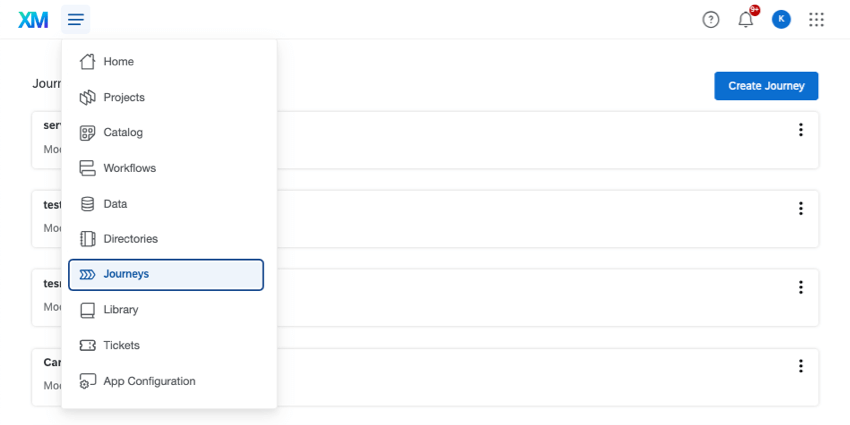
The Journeys page is most useful for when you want to use the journey chart widget in Employee Experience projects, such as Engagement, Lifecycle, Ad Hoc Employee Research, and Pulse. For comprehensive steps, see Employee Experience Journeys.
For Customer Experience research, we highly recommend using Customer Experience programs instead. However, if you’ve already collected journey data in separate survey projects, you can use the Journeys page to build your journey.
Enabling Journeys
The Manage Journeys permission must be enabled for your user account by your Brand Administrator in order to use this feature.
The Use Journeys brand-wide permission must also be enabled for your organization. If “Manage Journeys” is enabled for your account but you still cannot use the Journeys feature, have your Brand Administrator contact your Qualtrics Technical Success Manager to have the “Use Journeys” brand-wide permission enabled.
Defining Your Journey Stages
The stages of the journey are the moments that have the greatest impact on the customer’s overall experience. Stages allow you to identify customer feedback at a specific point in time. These could be a single interaction, groups of transactions, channels, or logical groupings of different decisions during the customer journey.
For example, your customers may feel differently about their experience buying your product versus returning the product. By setting up your journey to capture feedback from those buying and returning interactions, you can figure out exactly where in the customer journey your company is excelling, and where you can funnel additional resources.
- Navigate to the Journeys page.
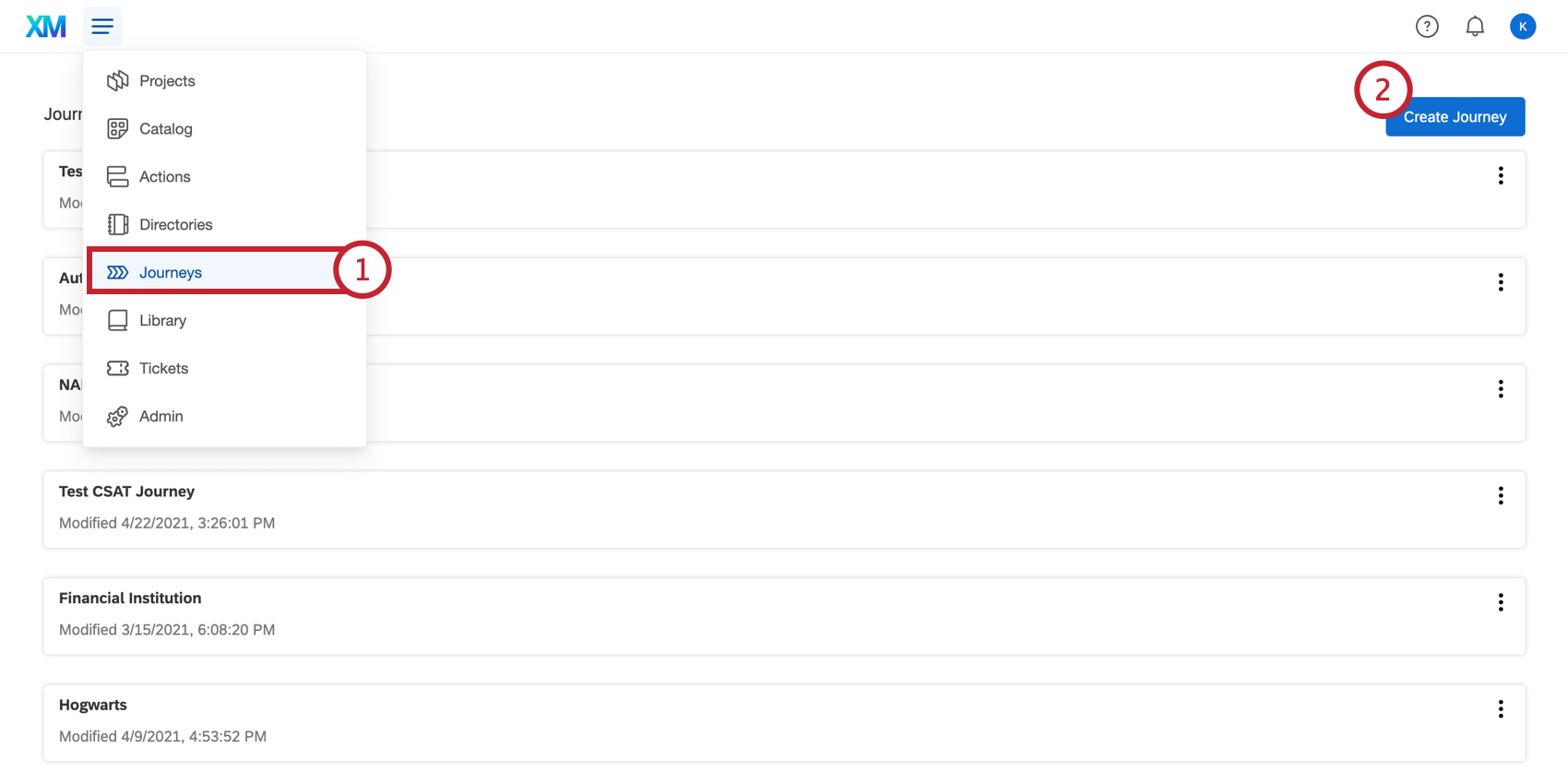
- Click Create Journey.
- Type in a name for your journey.
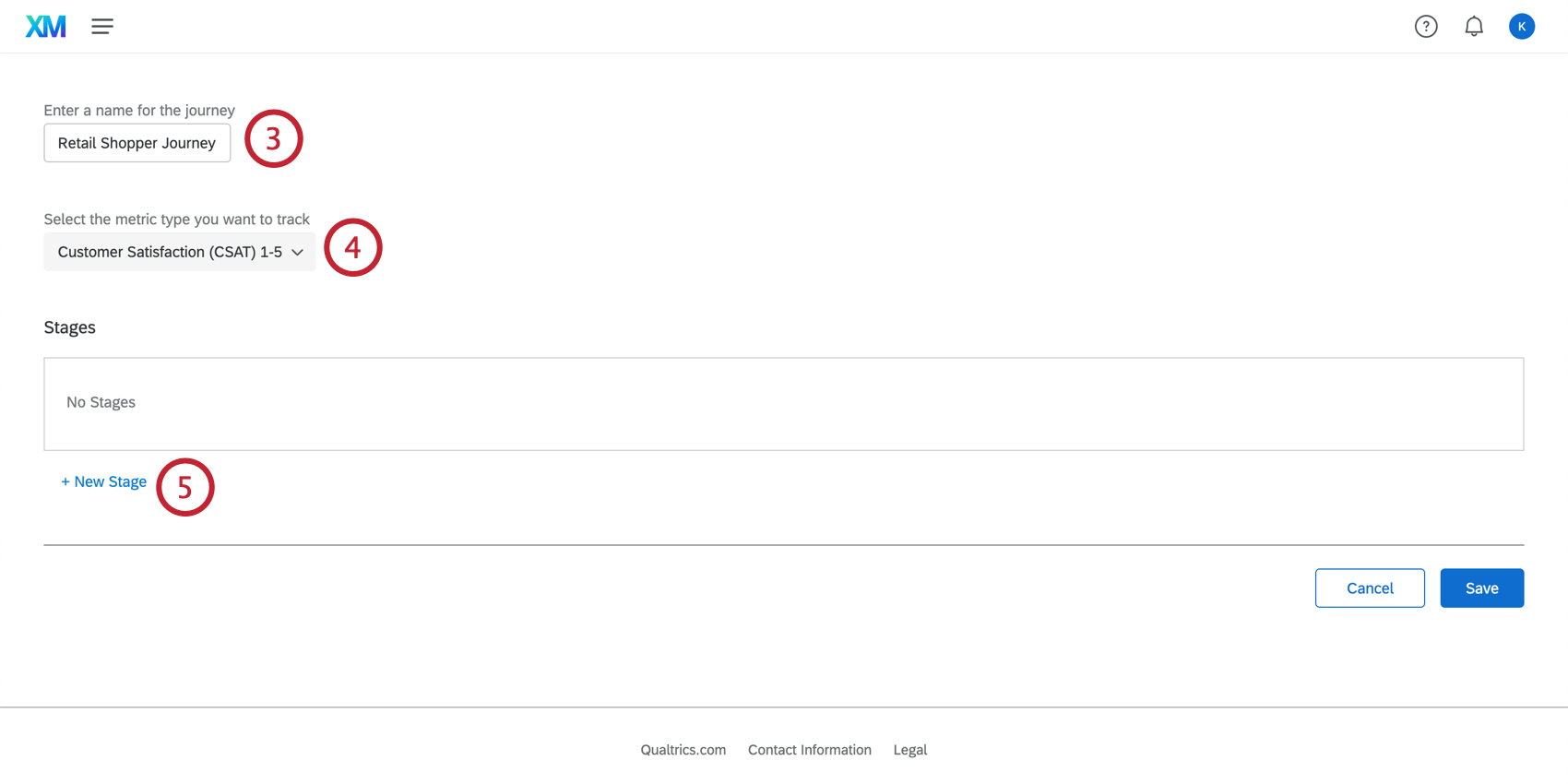
- Select the metric type you would like to track. This will correspond to the questions you are asking your respondents in order to track experience outcomes.
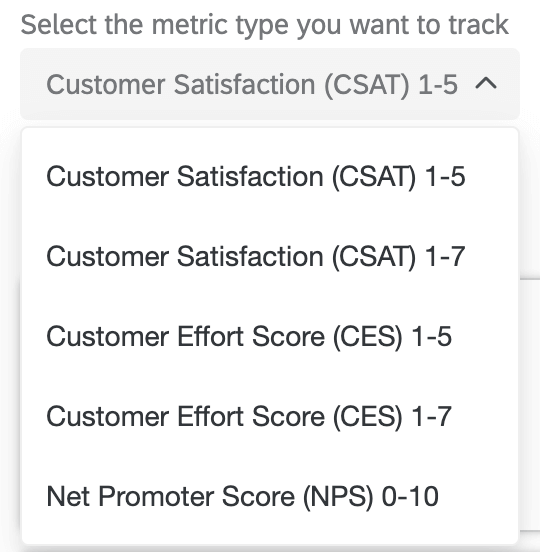
Metric types available in journeys:- Customer Satisfaction (CSAT) 1-5
- Customer Satisfaction (CSAT) 1-7
- Customer Effort Score (CES) 1-5
- Customer Effort Score (CES) 1-7
- Net Promoter Score (NPS) 0-10
Example: If at every point in the journey you plan to ask your respondents, “How satisfied were you with [this particular experience] on a scale of 1-5?” you would select Customer Satisfaction (CSAT) 1-5 as your metric type.Attention: All the experience data you’re using should be gathered using a consistent scale and metric.Attention: If you’re creating a journey with employee feedback, skip this step and do not select a metric. - Click New Stage.
- Enter in a Stage Name to create the stage you would like to observe throughout the customer’s journey. This should be a specific interaction point; for example, a “Purchase” stage could correspond to a survey your customer receives right after purchasing your product.
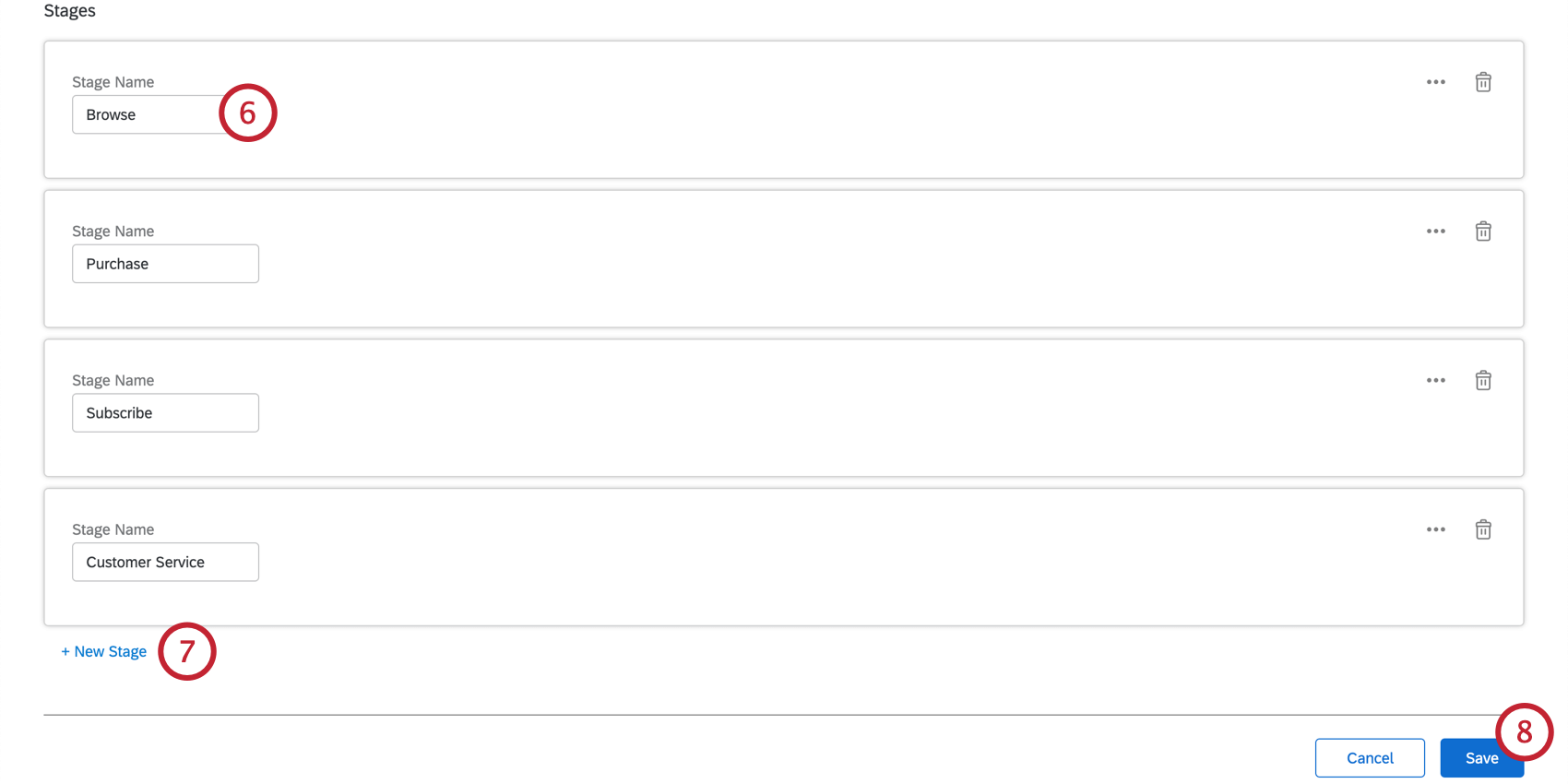
- Click New Stage to create additional stages.
Qtip: You can change the order of the stages by clicking the three dots in the top-right corner. Here, you’ll have the option to move your stages up, down, to the top of the list, or to the bottom of the list.
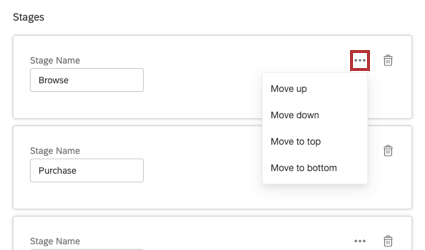 Attention: Make sure that journey stages are listed in the desired order. The first stage of the journey should be listed at the top, and the last stage should be listed at the very bottom.
Attention: Make sure that journey stages are listed in the desired order. The first stage of the journey should be listed at the top, and the last stage should be listed at the very bottom. - Once you’ve created all of your journey stages, click Save.
Next Steps
Once you’ve defined your journey stages, it’s time to prepare your data for your stakeholders.
- First, make sure your surveys are set up correctly for each journey stage.
- Next, configure your dashboard data.
- Finally, you can create widgets like the journey chart to display each milestone’s performance.
